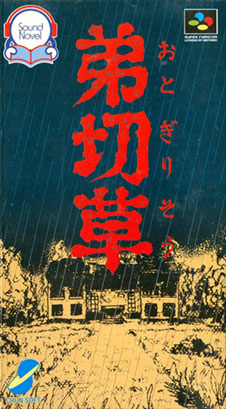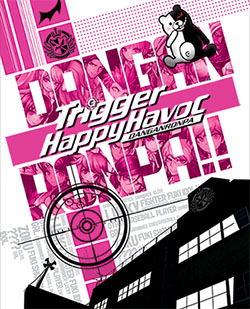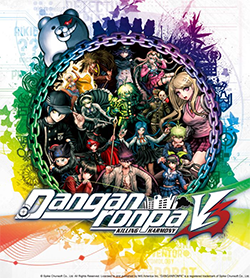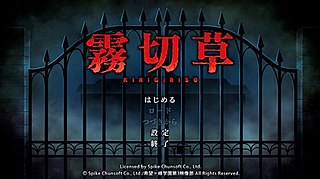
Cyber Sled is a vehicular combat video game developed and published by Namco. It was originally released for arcades in 1993. The game's perspective is third-person by default, but can be switched to a first-person perspective. The game was nominated for Most Innovative New Technology at the 1994 AMOA Awards. It later received a sequel in 1994, Cyber Commando.

Otogirisō is a visual novel game produced and published by Chunsoft. Marketed by the company as a "sound novel" rather than a video game, it is the progenitor of the developer and publisher's sound novel series and of the format of electronic entertainment now usually known generically as a visual novel. Koichi Nakamura conceived the title after showing his work on the Dragon Quest role-playing video games to a girl he was dating. On finding she did not enjoy them, he was encouraged to make a video game that he described as "for people who haven't played games before." Influenced by the early survival horror game Sweet Home, he developed it as a horror-themed interactive story. Released in March 1992, the game sold over 400,000 copies in Japan, including over 300,000 for Super Famicom and 100,000 for PlayStation.

Danganronpa: Trigger Happy Havoc is a visual novel adventure game developed and published by Spike. The first installment in the Danganronpa series, it was originally released for the PlayStation Portable in Japan in November 2010. It was ported to Android and iOS in August 2012. NIS America localized and published the game internationally on PlayStation consoles.
Danganronpa is a Japanese video game franchise created by Kazutaka Kodaka and developed and owned by Spike Chunsoft. The series primarily surrounds various groups of apparent high-school students who are forced into murdering each other by a robotic teddy bear named Monokuma. Gameplay features a mix of adventure, visual novel, detective and dating simulator elements. The first game, Danganronpa: Trigger Happy Havoc, was released for the PlayStation Portable in 2010.

Danganronpa 2: Goodbye Despair is a 2012 visual novel developed by Spike Chunsoft. It is the second game in the Danganronpa franchise following Danganronpa: Trigger Happy Havoc (2010). It was first released in Japan for PlayStation Portable in July 2012, and a port for PlayStation Vita was released in Japan in October 2013. NIS America released the game worldwide in September 2014; a port for PC was released in April 2016 and a bundle for PlayStation 4 and Playstation Vita called Danganronpa 1-2 Reload, also containing the first Danganronpa game, was released in March 2017. An enhanced version with the subtitle Anniversary Edition was released for Android and iOS in August 2020, for Nintendo Switch in November 2021, and for Microsoft Windows and Xbox One May 2022.

Monokuma is a fictional identity adopted by several characters in the Danganronpa series, serving as the mascot and central antagonist of the series. Monokuma first appears in Danganronpa: Trigger Happy Havoc as a disguise used by Junko Enoshima during her killing game in the fictional school of Hope's Peak Academy. Monokuma was created by scenario writer Kazutaka Kodaka and designed by Rui Komatsuzaki. The identity is used primarily as a disguise for the masterminds of each game to conceal their identities while overseeing and organizing killing games, and as such has been voiced by several actors. The character has often appeared in popular culture since its inception, spawning a series of action figures and merchandise. Nobuyo Ōyama and TARAKO voice Monokuma in Japanese, while Brian Beacock provides his voice for the English versions of the games and Greg Ayres provides his voice for the English dub of Danganronpa: The Animation.

Danganronpa: Unlimited Battle is a 2015 action video game developed and published by Spike Chunsoft. A part of the Danganronpa series, it was released in Japan for Android and iOS before ceasing operations later in 2015. The gameplay involved using the touchscreen to shoot the characters from the player's team, as with billiards, towards enemies in a confined arena-like area. The game was free to play and was supported by microtransactions.

Mystery Chronicle: One Way Heroics is a role-playing video game developed by Spike Chunsoft for the PlayStation 4 and PlayStation Vita, released in Japan on July 30, 2015. It is a spin-off of the Mystery Dungeon series, and is based on the indie game One Way Heroics.

Danganronpa V3: Killing Harmony is a visual novel developed and published by Spike Chunsoft. The game was released in Japan in January 2017 for PlayStation 4 and PlayStation Vita, and in North America and Europe by NIS America in September 2017. A Windows version was released worldwide on the same date. An enhanced version of V3 with the subtitle Anniversary Edition was released for Nintendo Switch in Japan in November 2021, and worldwide in December 2021. This improved version was also released for Android and iOS in April 2022, and for Windows 10 and Xbox One in September 2022.

Spike Chunsoft Co., Ltd. is a Japanese video game development and localization company specializing in role-playing video games, visual novels and adventure games. The company was founded in 1984 as Chunsoft Co., Ltd. and merged with Spike in 2012. It is owned by Dwango.

Danganronpa 3: The End of Hope's Peak High School is a mystery horror anime television series produced by Lerche, directed by Daiki Fukuoka, and supervised by Seiji Kishi. The anime is the second animated series based on Spike Chunsoft's Danganronpa video game franchise, and serves as a conclusion to the "Hope's Peak Academy" arc established in the previously released games Danganronpa: Trigger Happy Havoc and Danganronpa 2: Goodbye Despair. The series is divided into three parts. Future Arc focuses on Makoto Naegi and his friends and their involvement in a killing game with the Future Foundation; and Despair Arc focuses on Hajime Hinata, a student, and his involvement in experiments on humans. The first two story arcs aired between July and September 2016. They were followed by Hope Arc, the conclusion to both previous arcs, which aired on September 29, 2016.
Makoto Naegi is a fictional character introduced as the protagonist of the 2010 visual novel adventure game Danganronpa: Trigger Happy Havoc by Spike Chunsoft. A fairly optimistic but otherwise average student who is selected in a raffle to enroll in Hope's Peak Academy as the "Ultimate Lucky Student", Makoto finds himself before a remote-controlled robotic stuffed bear named Monokuma upon entering the academy, who states that he and his fellow students will be imprisoned in the academy for the rest of their lives unless one of them becomes "the blackened" and murders another without being found out by the other students, prompting the character to solve crimes. Makoto returns in the game's sequels and in multiple adaptations featuring him in new story arcs, most notably in Lerche's 2016 anime series Danganronpa 3: The End of Hope's Peak High School, as a member of an organization known as the Future Foundation that seeks to take his life in a new killing game.

Kyoko Kirigiri is a fictional character from the Spike Chunsoft visual novel action-adventure game series Danganronpa. She was introduced in the 2010 game Danganronpa: Trigger Happy Havoc as a high school student and the "Ultimate ???" of Hope's Peak Academy. Kyoko finds herself sealed within the building alongside her classmates, who are told by a robot named Monokuma that can only leave the school if they commit a murder and successfully evade conviction in the ensuing class trial. By the end of the game, Kyoko is revealed to be the "Ultimate Detective". Despite being initially distant to the cast, Kyoko befriends Makoto Naegi and they join forces to solve class trials and discover the identity of the mastermind behind the killing game. Kyoko Kirigiri reappears in other Danganronpa titles and sequels, most notably in the 2012 sequel Danganronpa 2: Goodbye Despair as a member of the Future Foundation, the 2017 game Danganronpa V3: Killing Harmony as an apparition of the mastermind in the final trial, the 2016 anime series Danganronpa 3: The End of Hope's Peak High School and the spin-off video game Kirigiri Sou as a supporting character, as well in the series of prequel light novels Danganronpa: Kirigiri (2013–2020), which center on her childhood and rise through the Detective Shelf Collection (DSC), as she deals with new cases with her assistant Yui Samidare.

Nagito Komaeda, also known as The Servant, is a fictional character introduced in the 2012 Spike Chunsoft visual novel action adventure game Danganronpa 2: Goodbye Despair. Nagito is a high school student from Hope's Peak Academy, holding the title of "Ultimate Lucky Student" due to his supernatural luck. He is first seen in the game's beginning when meeting the protagonist Hajime Hinata as they and multiple other students find themselves trapped in a series of tropical islands. Initially presenting a caring personality, Nagito shows his true maniacal and hope-obsessed demeanor when a bear-like robot, Monokuma, orders the students to participate in a killing game if they want to leave the islands, with Nagito violently encouraging the killing game's progress. Under the guise of the Servant, Nagito returns in Danganronpa Another Episode: Ultra Despair Girls as the secondary antagonist.

Hajime Hinata, also known as Izuru Kamukura, is a character from the Spike Chunsoft visual novel action-adventure game series Danganronpa. The character has two identities: Izuru first appeared in the 2011 light novel prequel Danganronpa Zero by Kazutaka Kodaka as a mysterious high school student whose actions resulted in genocide, while a computer avatar copy of Hajime appeared as the protagonist of the 2012 video game Danganronpa 2: Goodbye Despair, as a high school student with no memory of his past, forced to investigate murder cases involving high school students who are trapped on a group of tropical islands. The prequel anime Danganronpa 3: The End of Hope's Peak High School further explores the past of the human Hajime and how he volunteered to undergo experimentation to become the silent apathetic superhuman Izuru.

Chiaki Nanami is a fictional character from Spike's 2012 visual novel Danganronpa 2: Goodbye Despair. Formally known as the Ultimate Gamer, Chiaki initially appears as an apparent high school student trapped with fifteen other students in the Jabberwock Island chain, where an omnipresent robotic bear named Monokuma forces the student to participate in a killing game in exchange for freedom. She can bond with the protagonist Hajime Hinata in both social life gameplay and the main storyline before her true persona is revealed as the artificial intelligence observer daughter of Chihiro Fujisaki, and the younger sister of Alter Ego and Usami / Monomi. Chiaki makes a cameo appearance in two episodes of the anime series Danganronpa 3: The End of Hope's Peak High School, with an identical character the original Chiaki Nanami, the visual basis for her design, appearing in the prequel Despair Arc who bonds with Hajime.

Kirigiri Sou is a visual novel game developed by Spike Chunsoft for Microsoft Windows. The game is the second spin-off of the Danganronpa series of visual novel games following Danganronpa Another Episode: Ultra Despair Girls, set between the events of the Danganronpa Kirigiri light novel series and Danganronpa: Trigger Happy Havoc, while also serving as a crossover sequel to the 1992 Chunsoft game Otogirisō. The game was released in Japan on Windows and OS X on November 25, 2016, bundled with the third Blu-ray box set of anime series Danganronpa 3: The End of Hope's Peak High School. It was well-received by critics, who enjoyed its visuals and storyline.

Danganronpa S: Ultimate Summer Camp is a role-playing video game with board game elements, developed and published by Spike Chunsoft for the Nintendo Switch in late 2021, with Android, iOS, PlayStation 4, and Windows versions released in 2022. The game, a spin-off installment in the Danganronpa visual novel series, is an expanded version of two side-modes from Danganronpa V3: Killing Harmony (2017), and was released digitally as a standalone game and physically through the game compilation Danganronpa Decadence, as a part of celebrations for the 10th anniversary of the Danganronpa series.
Danganronpa is an adventure visual novel video game franchise created by Spike Chunsoft. The series follows groups of high school students who are trapped in an enclosed area, with the only way to escape being to murder a fellow student and not be caught in a subsequent investigation and trial. The music of Danganronpa comprises seven soundtrack albums, as well as numerous singles, mini albums, and other music releases. The main composer for the series is Masafumi Takada, who has composed for all of the series' soundtracks and has also released many of them on his label, Sound Prestige Records. Takada has been aided with the franchise's music by various artists, including other composers, lyricists, and singers.

















